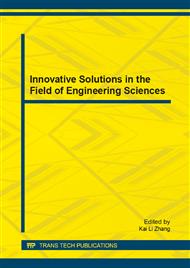p.116
p.121
p.126
p.130
p.135
p.144
p.149
p.155
p.161
Numerical Simulation of Vehicle Crashes
Abstract:
Based on the European New Car Assessment Program, which offers rigorous testing conditions, this study developed a numerical model for the computer simulation of crash analysis and analyzed two crash situations: a high-speed vehicle crashing into a wall and a high-speed test vehicle crashing into a static vehicle. The Simulation model was constructed using the superior functions of the Patran software, and the Pam-crash software was employed to perform various calculations for analysis. In crashes, the structure of vehicle bodies are greatly compressed and deformed because of high-speed impact force, which simultaneously generates high speed acceleration. Vehicle structural deformation constricts the driver and passengers, and acceleration can cause them physical harm. Thus, the objective of this study was to identify the sources of harm to driver and passengers when crashes occur. The research results can be a reference for vehicle manufacturers in future vehicle development and a reference for future academic research.
Info:
Periodical:
Pages:
135-143
Citation:
Online since:
June 2014
Authors:
Price:
Сopyright:
© 2014 Trans Tech Publications Ltd. All Rights Reserved
Share:
Citation:


